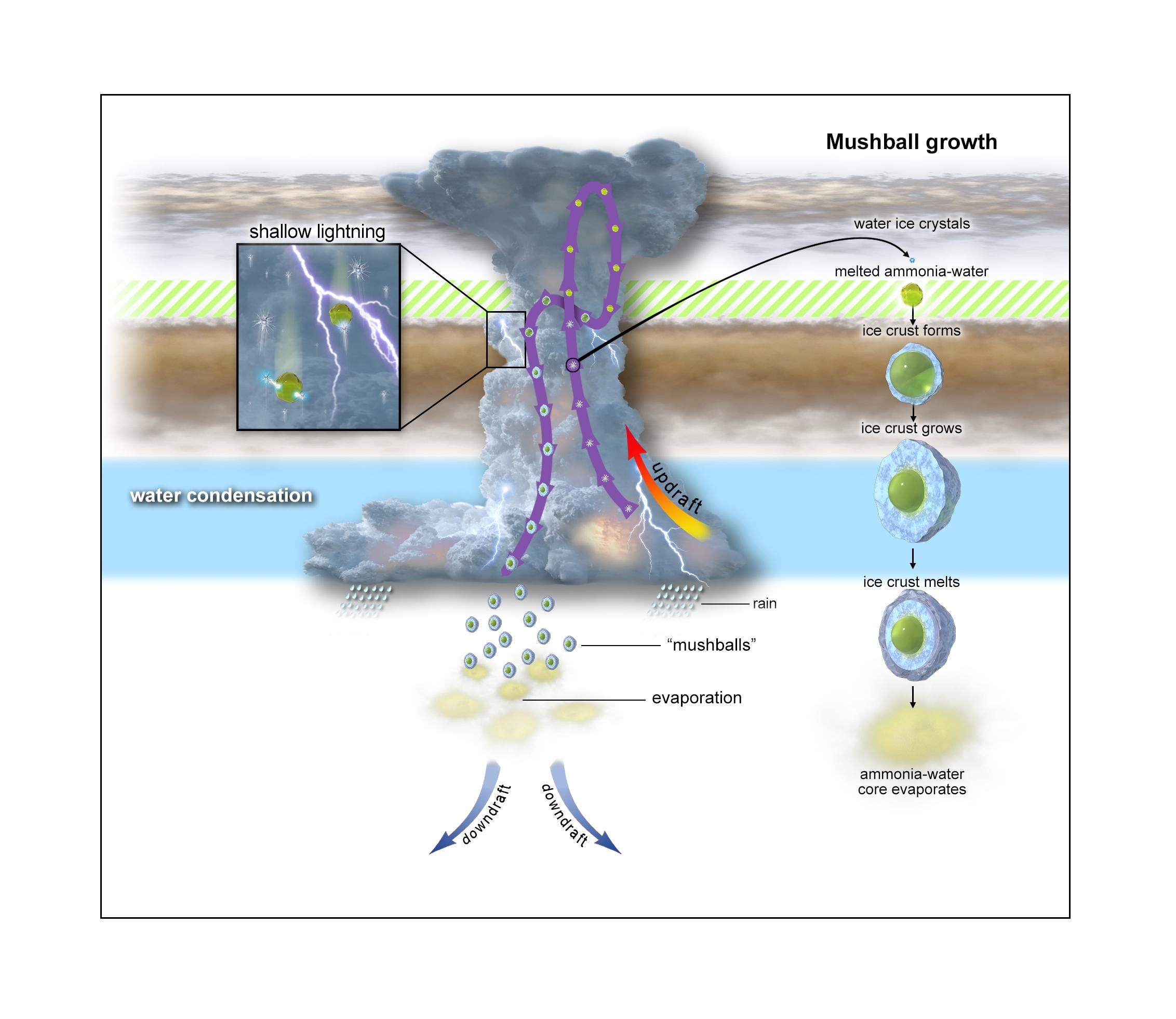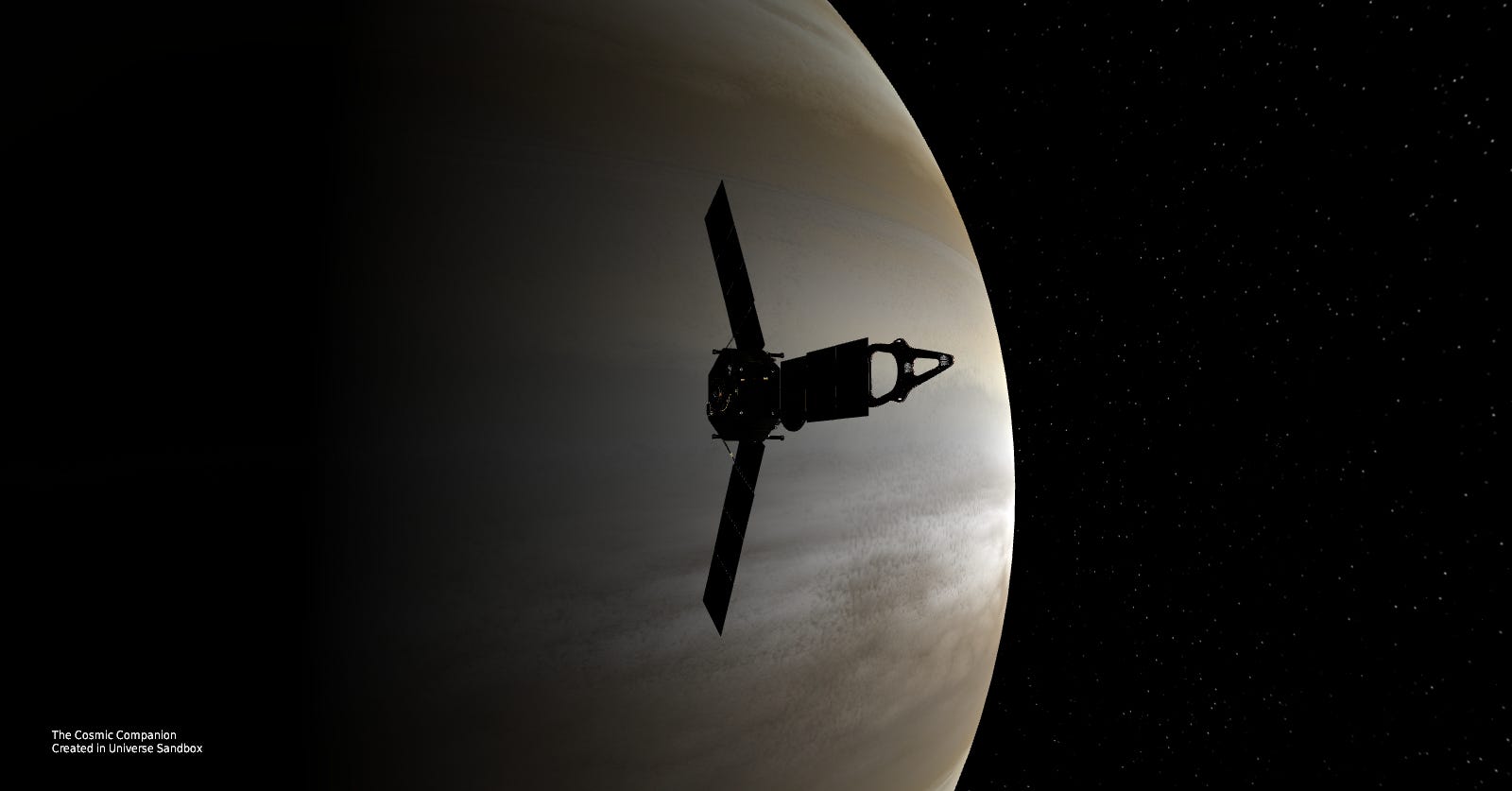Prior to the arrival of the Juno spacecraft at Jupiter, astronomers had noted lower-than-expected levels of ammonia in the upper atmosphere of the giant world. Following the arrival of Juno at Jupiter in July 2016, astronomers found higher concentrations of ammonia near the center of the planet than was seen closer to the poles. These findings remained a mystery — until now.
“While most latitudes exhibit a low abundance, the Equatorial Zone of Jupiter has an abundance of ammonia that is high and nearly uniform with depth. In parallel, the Equatorial Zone is peculiar for its absence of lightning, which is otherwise prevalent most everywhere else on the planet,” investigators report in the Journal of Geophysical Research: Planets.
Flashes of lightning were first seen on Jupiter, by the Voyager spacecraft in 1979. On Earth, thunderstorms form in regions where water exists in all three common states of matter — solid, liquid, and gas.
On Jupiter, as on our own planet, water moves through the atmosphere. Roughly 50 kilometers (just over 30 miles) beneath the visible surface of Jupiter’s cloud tops, where temperatures hover around zero Celsius (32 Fahrenheit) storms take shape. When they grow powerful enough, crystals of water ice are lifted high into the atmosphere.
Once there, the water crystals interact with ammonia, which acts as antifreeze, melting the ice. This process forms thick, ammonia-rich mushballs that fall deep into the Jovian atmosphere. As they warm deeper in the atmosphere, they melt, releasing ammonia and water, trapping the materials beneath the cloud tops of Jupiter.
“At these altitudes, the ammonia acts like an antifreeze, lowering the melting point of water ice and allowing the formation of a cloud with ammonia-water liquid. In this new state, falling droplets of ammonia-water liquid can collide with the upgoing water-ice crystals and electrify the clouds. This was a big surprise, as ammonia-water clouds do not exist on Earth,” Heidi Becker, Juno’s Radiation Monitoring Investigation lead at NASA’s Jet Propulsion Laboratory, explains.
This process dries out the atmosphere of Jupiter, resulting in relatively low levels of ammonia in the upper cloud layers of Jupiter.
Journal of Geophysical Research.


